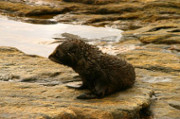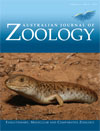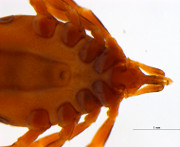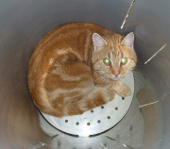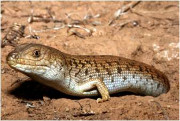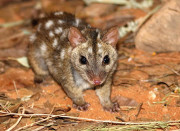Australian Journal of Zoology
Volume 62
Number 4 2014
Pup production of New Zealand fur seals in Western Australia in the 2010/11 austral summer at 17 breeding colonies was estimated to be 3518. This represented a significant reduction in the growth rate over the past 10 years, indicative of the population nearing its current carrying capacity.
Photo by Richard Campbell.
Ticks (Ixodidae) were collected from northern quolls (Dasyurus hallucatus) from the Atherton Tableland, north Queensland. Four species of ticks were collected, with three (Ixodes fecialis, I. holocyclus and I. tasmani) representing new host records for D. hallucatus. These records add new details to the ecology of the parasite fauna of an endangered marsupial.
Photo by Haylee J. Weaver.
A high seroprevalence (84.2%) of Toxoplasma gondii antibodies is reported from feral and stray cat populations in Tasmania. Results were higher than serosurveys from most other Australian localities and nearly all other countries. This indicates a high risk of infection for a range of intermediate host species, with significant implications for wildlife conservation, livestock production and public health.
Photo by Bronwyn Fancourt.
We assessed the factors affecting the body condition of adult pygmy bluetongue lizards over five sampling years. We found that sampling year and activity period within the year were the two most important factors influencing variation in body condition of lizards. The annual variation in body condition provides important information for conservation managers monitoring persisting populations of endangered species.
Photo by Aaron Fenner.
Thirty-six historical accounts demonstrate the propensity for quolls to become hyperabundant and more than 110 accounts demonstrate that disease/parasite epizootics occurred in south-eastern Australia. We implicate these as the initial primary factor in the regional extirpation of quolls. Accounts of cat and fox predation highlight their capacity to have reduced quoll distribution and abundance.
Photo by Jerome Kalvas.
